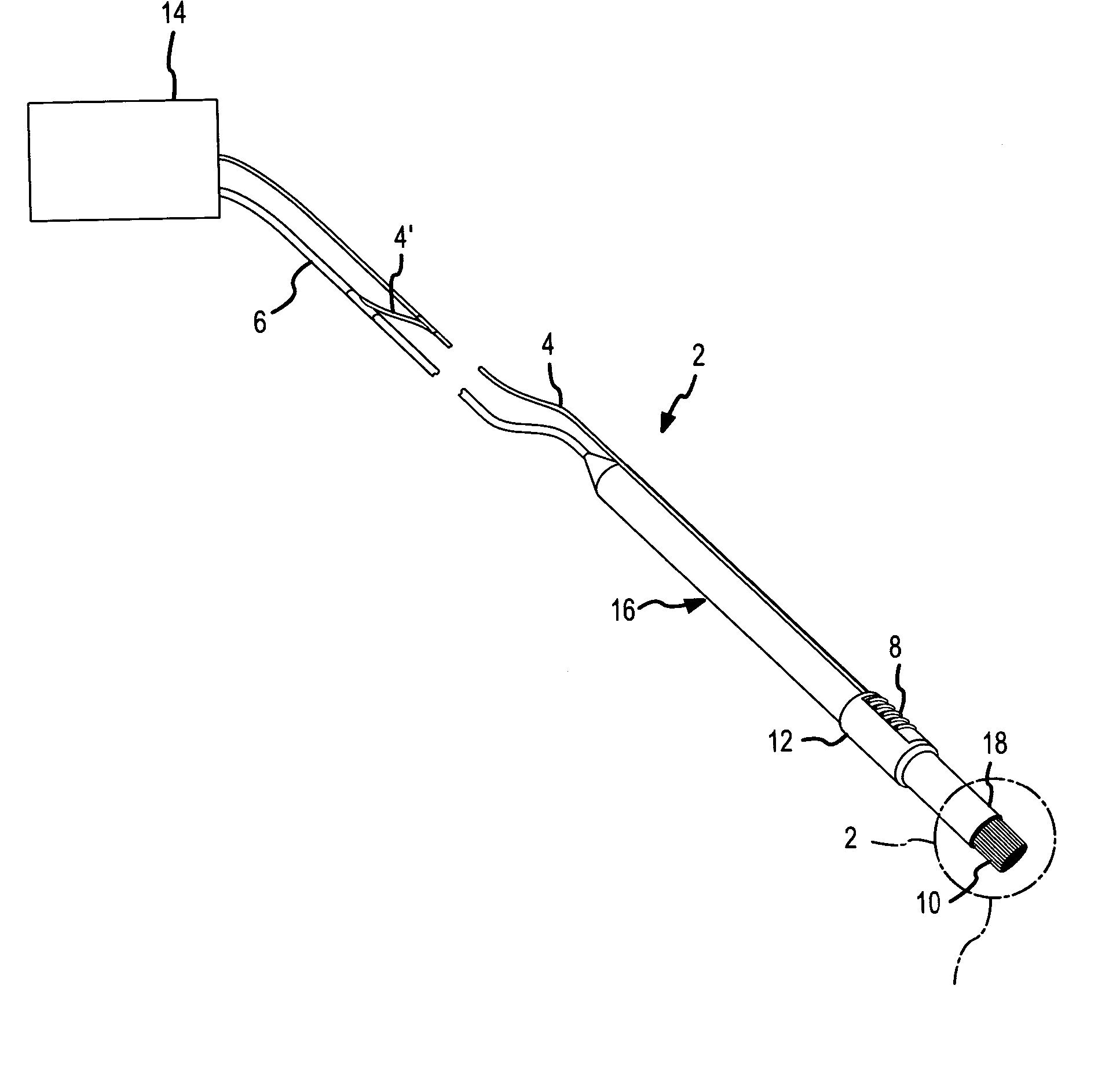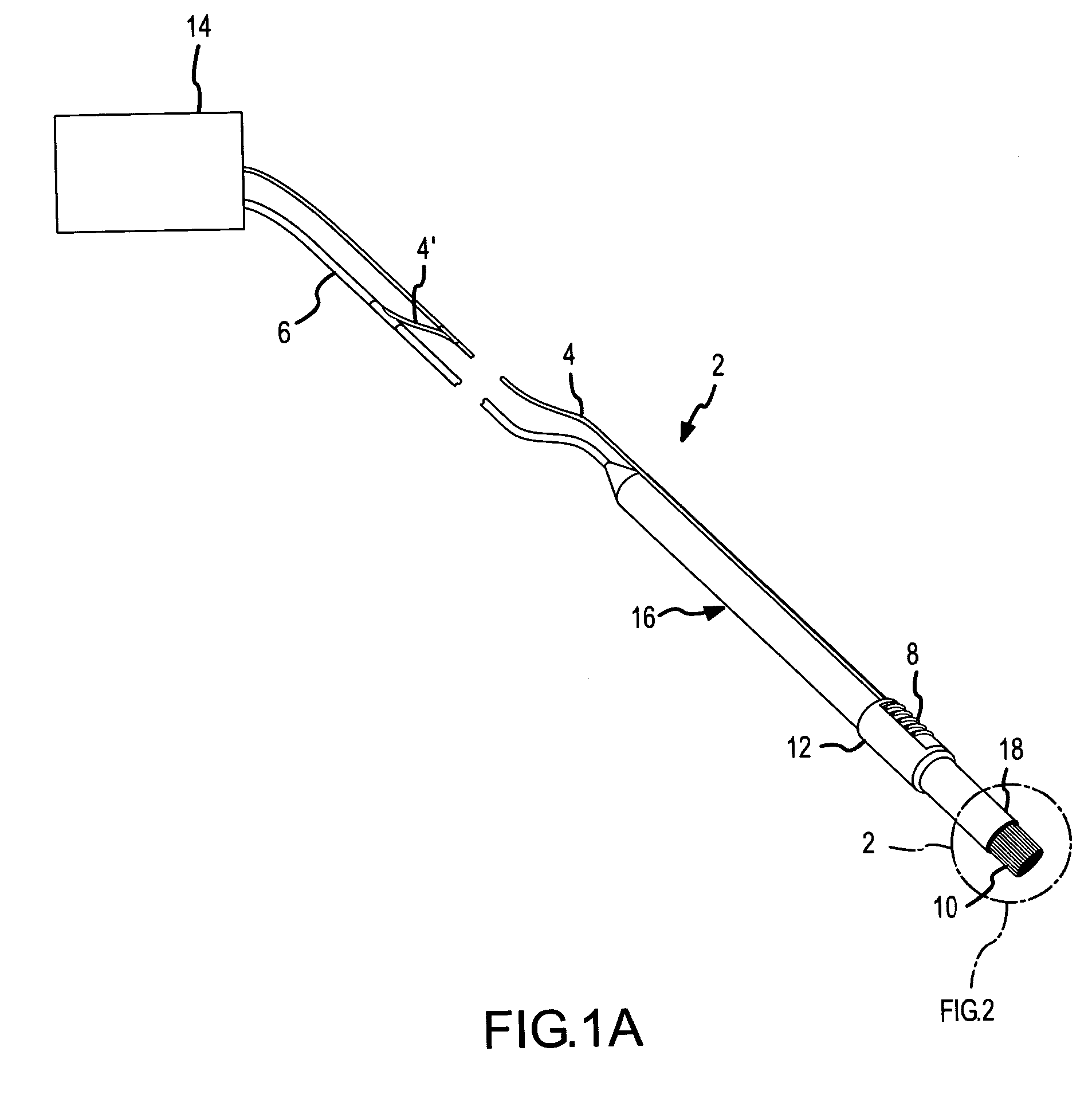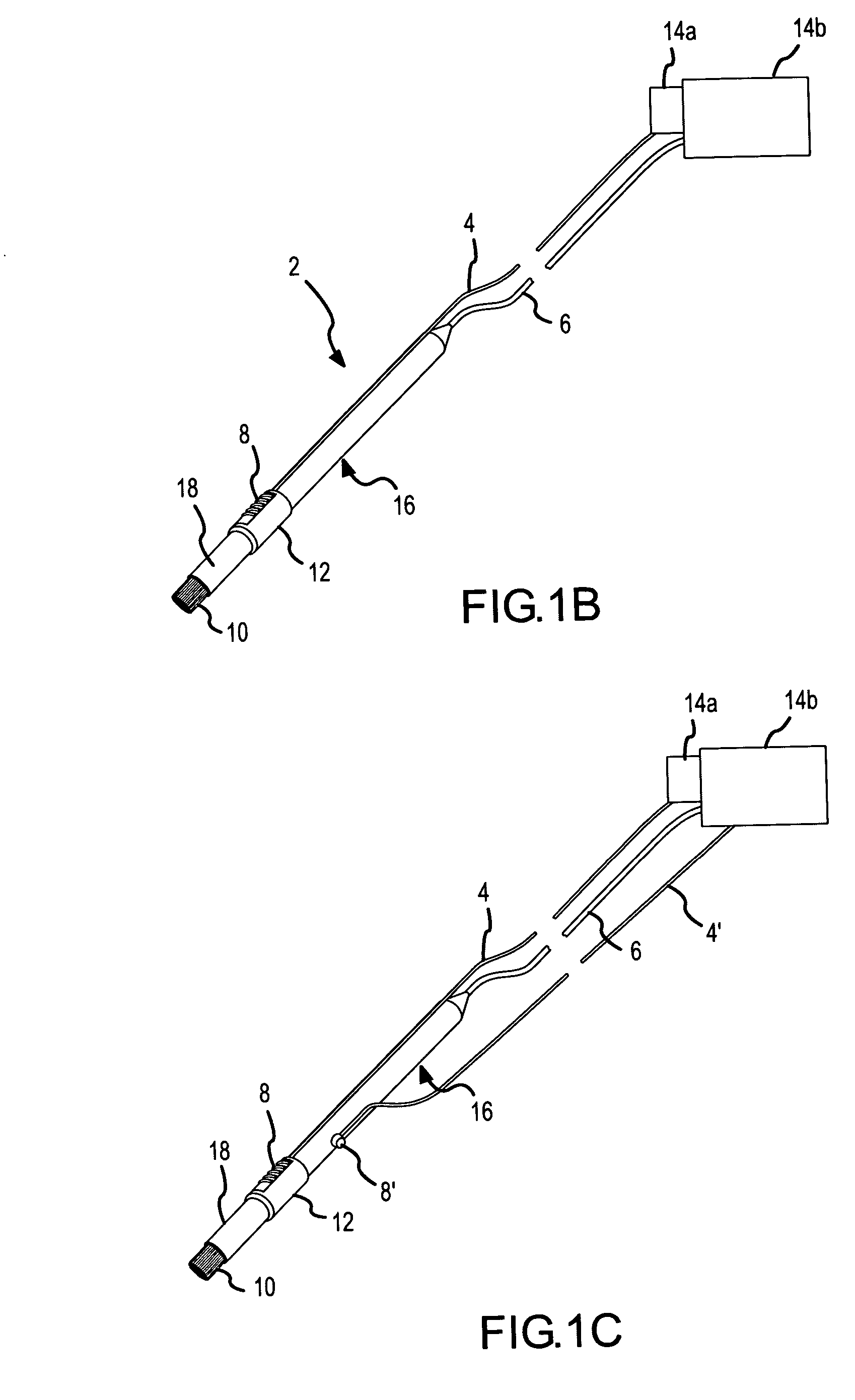Surgical device with brush electrode and methods for electrosurgical treatment
a surgical device and electrosurgical technology, applied in the field of surgical devices with brush electrodes and electrosurgical treatment, can solve the problems of large temperature gradients and hot spots, may be encountered with a large number of difficulties, so as to reduce the formation of undesirable coagulum and charring of surface tissue, arrest bleeding, and dissipate varicose veins
- Summary
- Abstract
- Description
- Claims
- Application Information
AI Technical Summary
Benefits of technology
Problems solved by technology
Method used
Image
Examples
first embodiment
[0074]FIG. 26 is a cross-sectional view of a shielded-tip brush electrode 120. In this embodiment, the uninsulated portion 52 of the primary conductor 48 is looped around the outer surface of the brush electrode after passing through a mechanical interface 122 supporting the filaments 26 of the shielded-tip brush electrode 120 adjacent to the distal end 124 of an inner sheath 126. Since fluid may or may not travel through the lumen 128 of the inner sheath 126, the mechanical interface 122 may or may not be porous. It should be noted that, although the filaments 26 are shown as extending only into the distal end 124 of the inner sheath 126, the filaments 26 may extend further into the inner sheath 126 and may even extend all the way to the proximal end (not shown) of the surgical pencil.
[0075] In the embodiment depicted in FIG. 26, the pencil shaft 130 surrounds the inner sheath 126. The inner sheath 126 houses the primary conductor 48 and supports the mechanical interface 122 for th...
second embodiment
[0078]FIG. 27 is similar to FIG. 26, but depicts a shielded tip brush electrode 120′. The only differences between the embodiment depicted in FIG. 26 and the embodiment depicted in FIG. 27 are the size of the fluid jacket and the configuration of the flexible polymer nipple or boot that supports the brush filaments. In the embodiment depicted in FIG. 27, an alternative flexible polymer nipple or boot 142′ defines a smaller fluid jacket 138′ and supports the filaments 26 in a band of direct contact 152 extending around the perimeter of the bundle of filaments 26. The band of direct contact 152 supports the filaments 26 over a larger section of the outer surface of the brush electrode 120′ than does the ring of direct contact 144 depicted in FIG. 26. By adjusting the configuration of the flexible polymer nipple or boot 142′ in this manner, the amount of conductive fluid flowing into the brush electrode and the overall flexibility of the brush electrode can be manipulated.
[0079]FIGS. 2...
PUM
 Login to View More
Login to View More Abstract
Description
Claims
Application Information
 Login to View More
Login to View More - R&D
- Intellectual Property
- Life Sciences
- Materials
- Tech Scout
- Unparalleled Data Quality
- Higher Quality Content
- 60% Fewer Hallucinations
Browse by: Latest US Patents, China's latest patents, Technical Efficacy Thesaurus, Application Domain, Technology Topic, Popular Technical Reports.
© 2025 PatSnap. All rights reserved.Legal|Privacy policy|Modern Slavery Act Transparency Statement|Sitemap|About US| Contact US: help@patsnap.com



